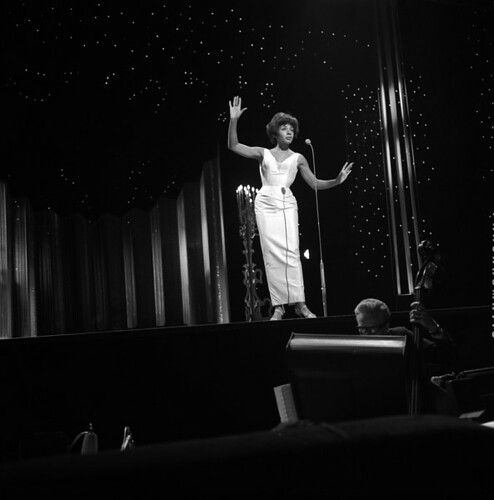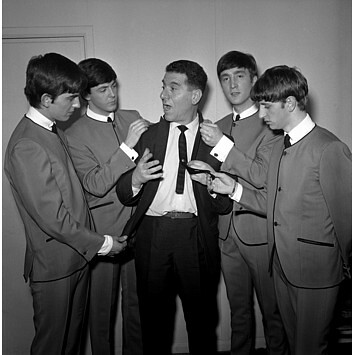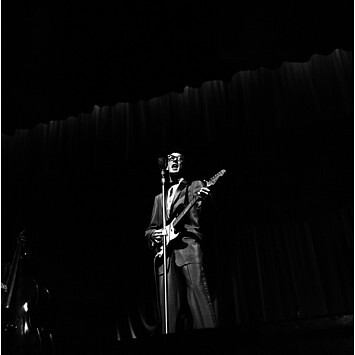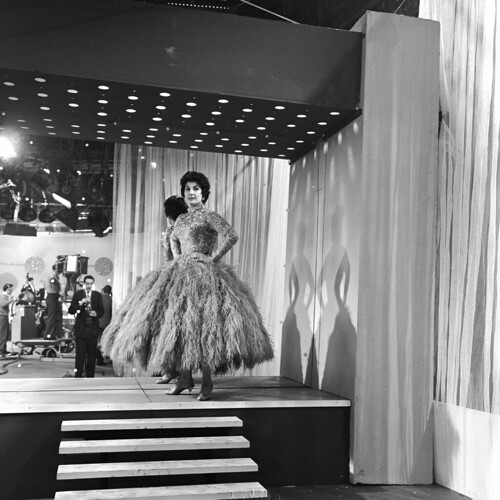Saturday, 5:56am
13 October 2012
When Harry shot Cliff
Harry Hammond’s 1959 photo of Cliff Richard catches a moment when rock’n’roll and ‘variety’ still brushed shoulders.
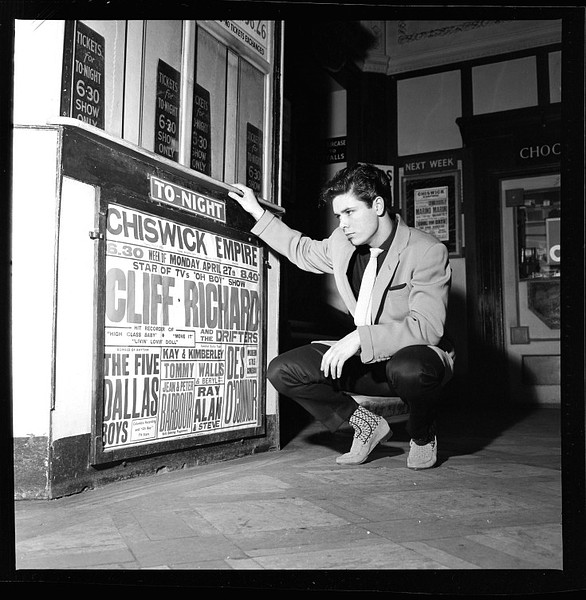
Harry Hammond is one of the founding fathers of showbiz photography, writes Holly Harris. The V&A’s exhibition of his photography charts the emergence of British popular music in the postwar era. Over the course of his career, Hammond shot UK pop’s finest, including Cliff Richard, Shirley Bassey and the Beatles.
H. Hammond, Shirley Bassey at the London Palladium, 1963.
Top: H. Hammond, ‘Cliff Richard at Top-of-the-Bill’ (photographic negative), 1959. © V&A Images.
Hammond’s photograph of Cliff Richard shows the singer in front of a poster for his headlining bill at the Chiswick Empire in 1959, the year he released ‘Living Doll’. Richard was one of the first UK stars to record songs that were not covers of American hits, earning him the accolade of being Britain’s first genuinely British rock’n’roll artist.
H. Hammond, The Beatles with Dougie Millings, 1963.
Right below: H. Hammond, Buddy Holly at the London Palladium, 1958. © V&A Images.
Hammond’s photograph also reveals the new rock’n’roll industry struggling to find its place in post-war Britain. Look at the poster in the singer’s gaze. In its composition and use of type, the poster is not dissimilar from variety bills that were posted on the fronts of London’s surviving Victorian music halls. (The Chiswick Empire was demolished later in 1959). Yet these wooden and golden sculpture-clad variety halls were unsuitable for the sound of pop – guitars, drums and amplified vocals.
H. Hammond, Marty Wilde performing on the Oh Boy! TV show, 1958. © V&A Images.
The poster in Hammond’s photograph marks the beginning of a cultural shift in the entertainment industry. That rock’n’roll had no physical ‘home’ in Great Britain is epitomised in a poster that uses a bygone form to publicise a new genre without irony. It wouldn’t be until the 1960s that rock bands developed individual identities through the graphic design of their posters, working with contemporary designers and poster artists who used psychedelic designs and vibrant colours and devised definitive logos. Bands eventually became brands, and Victorian posters became kitsch (and the subjects of songs such as the Beatles’ ‘Being for the Benefit of Mr Kite’ – now reprinted by designer Peter Dean for his site).
H. Hammond, Alma Cogan with Harry Hammond, 1957-’63. © V&A Images.
‘Halfway to Paradise: The Birth of British Rock, Photographs by Harry Hammond’, Theatre and Performance Galleries (Room 104), Victoria & Albert Museum, Cromwell Road, London SW7 2RL.
13 October 2012 to 3 March 2013. Admission free.
Eye is the world’s most beautiful and collectable graphic design journal, published quarterly for professional designers, students and anyone interested in critical, informed writing about graphic design and visual culture. It is available from all good design bookshops and online at the Eye shop, where you can buy subscriptions, back issues and single copies of the latest issue. You can also browse visual samples of recent issues at Eye before You Buy.

